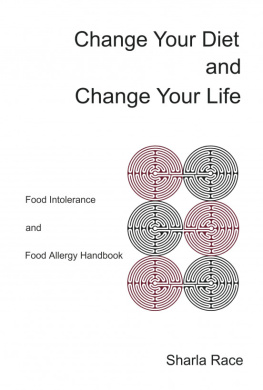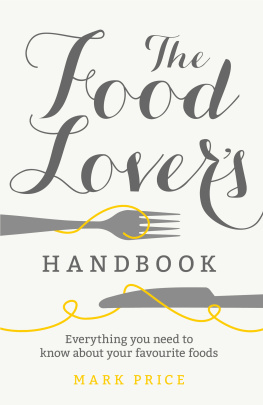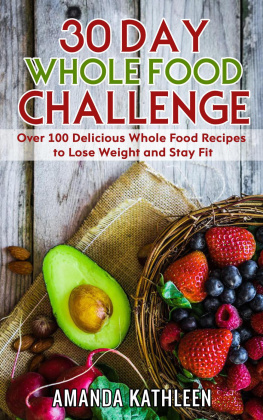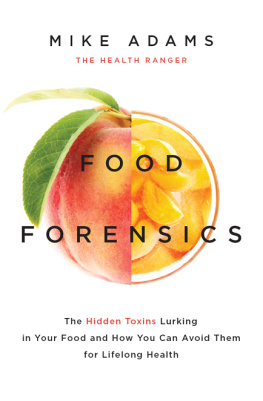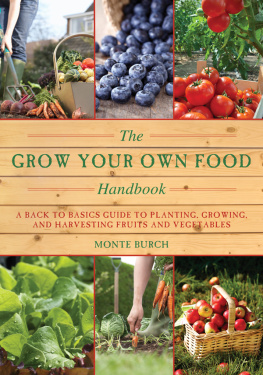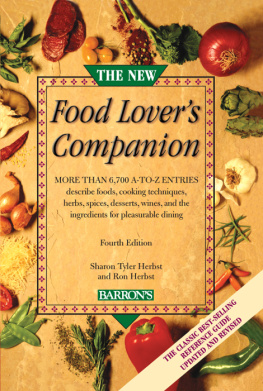Table of Contents
TO THOSE I DINE WITH.
Preface
THE OTHER DAY, a friend asked me why I was writing this book. I answered, I wrote it for you. She had just finished chemotherapy and had been told she had a weakened immune system, making her more vulnerable to infection and illness. At least two of my other friends were in similar situations. If, like them, you are in a high food-risk group because of illness or age, pregnancy, or medications you are taking, or have young children or other family members who are, I wrote it also for you.
Ultimately, if we value our health and want to live a long, active life, we all need to avoid contaminants and toxic substances in our food. Apart from anything else, no matter how delicious a meal may beand I love foodfood-borne illness is no fun. I am the poster child for what we venomously call food poisoning: At least three serious incidents of bacteria-caused food-borne illness (one of which came close to costing me my life), three confirmed cases (probably four) of internal parasites ... and who knows how many viruses, mold toxins, chemical toxins, and more. I dont need any proof that food can be risky.
There was the time I ate that delicious raw shellfish ceviche because I didnt want to offend the friend who was insisting I try it. Another time was when I was starving, late for a meeting, and I grabbed a Caesar salad (because it was quickest) at a restaurant I knew was unsanitary (I sat with my back to the open kitchen so that I couldnt see what was going on, which did not stop me from becoming ill). Another incident was probably caused by that undercooked barbecued chicken my husband made (he continues to deny it, but has since stopped barbecuing). And I am sure yet another experience involved slightly odd-smelling cold cuts in my refrigerator that were the only edible thing in the house when I returned late at night from a trip. One of the two worst times was when I ended up in intensive care with massive loss of blood. The other was when I became ill after working on sanitation in refugee camps in Bangladesh. (Believe me, it is very unpleasant to be violently ill on a long flight.) I have learned my lessonbut a little late. You could argue that it gives me an inside view of the issue. Frankly, I could have done without the personal experience.
It is not just a sudden bout of illness that we need to avoid. The subtle longer-term erosion of our health by toxic substances in our food may be even worse. I am fully convinced that hazards in our food are contributing to our constant fatigue and many of those debilitating and mysterious chronic conditions and diseases we suffer fromarthritis, digestive disorders, thyroid conditions, liver problems, cancers, and more. Why doesnt anyone laugh when I say that? Maybe deep down we all know it is truebut we dont want to think about it.
The pages that follow have drawn from thousands of sources and represent years of research on my part. Such sources cover a wide range: Statistics, original research, published books, scientific journal articles, case reports, expert committee reports (both in the North America and overseas), opinion pieces, government documents, and just about everything else relevant that I could lay my hands on. I also personally conducted limited interviews and observation studies, to check on issues. I have selected what I used with care, always going back to the original research whenever I could, and always using cross-verification with multiple different sources (through a process that the social sciences call triangulation [see note, page 1]) so that I would get the facts right. I have tried to be balanced and fairand no doubt sometimes failed.
Writing this book has been an oddly personal experience. Frequently, I have swung back and forth in time and between my wide-ranging professional and personal experiences. I recalled being a seven-year-old child, living on a small farm, tending chickens, milking cattle, harvesting vegetables. At other times I was sitting in the laboratory, staring amazed at how those bacteria on the petri dish were no longer proving to be susceptible to the usual antibiotics. Or I was gazing through a microscope, looking at parasites that you would never have expected to turn up in North America, or researching incredible and rather beautiful fungi (molds). Still at other times, I was wandering around thirdworld countries, working with farmersas the so-called foreign expert. Usually (to my shame), I was on the side of conventional agriculture, promoting use of factory-style farming, chemical fertilizer, and pesticides, often under the auspices of international organizations. At other times I was working with communities or women on the sanitation-, health-, and food-related issues that affected them.
Writing the book itself has been punctuated with tending my urban backyard garden in Californiacurrently standing at thirteen fruit trees, grape and berry vines, nine different vegetables, eight fresh herbs, and two emerging fishponds, in which I swear that one day I will raise our dinner (once I solve the problem of gulls and raccoons). There are no chickens at present, which is maybe just as well, considering zoning laws. But every once in a while, I keep threatening to get some again, when I want to unnerve my family.
It has all come together, in a way ... the various strands of my professional and personal experience. In that sense, everything in these pages is not just scientific, but also subjective. Perhaps, above all, it springs from my love of food in generalnot just growing it, but cooking it, presenting it, sharing it with family and friendsand best of all, eating it. For me, food is a visual as well as a culinary artone that has to appeal to all the senses at once. That is why I so resent the fact that food can also carry risksand why I confess that I sometimes cheat on my own advice. Life is a compromise.
In this book I wanted to take a food-focused view of the food-safety topic, not the usual perspective. I also wanted to touch on a few of our unfounded food fears, as well as the more real immediate and longer-term risks that we face.
Not everyone will agree with my conclusions or the decisions or actions proposed. There is so much disagreement in this field that it would be surprising if everybody did agree. The situation itself is constantly changing as our global and industrialized food system changes, emerging risks are discovered, and new studies are done.
I would like this book to do two things for you. First, I want to make you think more about what you eat. Second, I would like to help you eat more safelyif you want to. Not everyone is going to be like my agent, who after reading the book became a community-supported agriculture (CSA) member. But this handbook may convince you to take the food safety issue a bit more seriously, particularly if you are in a high-risk group.
HELI PERRETT
Oakland, California
Check Your Food-Risk Rating
WE ALL WANT to be healthy. What we eat is important to how we feel and how long we live. The nutritional value of our food is one important aspect. The foods safety is another. The more we can avoid illness-causing organisms, toxic chemicals, and such other dangerous substances in our breakfast, lunch, and dinner, the better it is for us.
Cant we just eat the most nutritious food? Unfortunately, food safety and nutrition do not always agree. The healthiest fruits and vegetables, grains, and fish are not always the safest from


